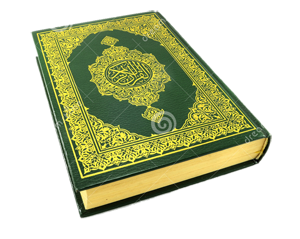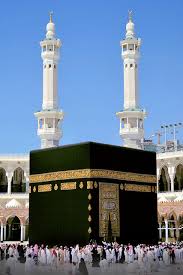The Medina Charter, 'Sahifat al-Medina' a Gift to Mankind
Ruby Amatulla
THE 7th century "Sahifat al-Madina"-- otherwise known as the Charter of Madina -- was the first written constitution known in human history. Originally laid down by the Prophet Muhammad (pbuh) to govern Medina, present-day scholars marvel at the amazing similarities between this document and documents such as the Constitution of the United States of America drafted eleven centuries later.
Both manifestos laid down a democratic federal system of governance, and both were also successful at integrating unruly autonomous groups -- the many independent Medinan tribes, the 13 independent colonies of the United States -- into a confederate system.
Prior to this confederation, Medina suffered from intertribal blood feuds that ripped the region apart. After hearing about the wisdom and diplomatic abilities of the Prophet Muhammad (pbuh), a delegation from Madina invited him, residing in Mecca at that time, to become their leader in order to help them find solutions and bring peace. The Prophet accepted the invitation and migrated from Mecca to Medina in 622 AD, known as the Hijrah at the start of the Muslim calendar.
One must keep in mind that at this time no concept of a "state" actually existed. There was no system of police, no army, and no judiciary. But in spite of all these difficulties, the Charter of Medina helped build a strong and resilient community that won three major wars launched by far superior Meccan military.
In spite of occasional dissension and treason initiated by some groups, the overall community grew more vibrant and prosperous, earning the trust and confidence of many outside tribes. Overall, this event left a legacy that helped Muslim communities to become a formidable force in Arabia and beyond.
With the Charter of Medina, various tribes were incorporated into a single confederation with rights and responsibilities. The Prophet called this confederation an “umma," or a single community composed of different ethnic and religious sub-groups. Freedom of religion and lifestyle were enforced, with shared community responsibilities involving maintenance of internal discipline as well as external self-defense. The Prophet served as a leader, an ultimate arbiter or judge in settling disputes and major conflicts. Thus, his decision was often the final decision.
Scholars such as Dr. Aziza al-Hibri, Imaduddin Ahmed, and others point out the similarities between Sahifat al-Madina and the American constitution, not only in their content but also in their tone. Dr. Robert D. Crane, a convert and a former advisor to President Nixon, revealed in his research that Thomas Jefferson -- one of the most prominent founding fathers of America who drafted the "Declaration of Independence" and contributed to the American constitution -- was deeply influenced by Islam. Jefferson had a Qur'an in his library, and when his library got burned down he ordered another copy. Keith Ellison, the first Muslim Congressman in America, used that same Qur'an to take the oath of office after his election.
Unfortunately, these scholars point out that ever since the Prophet's death the Muslim world has drifted away from the brilliant example established in Madina. Succeeding generations often built empires, dynasties, and monarchies that ran contrary to principles of democratic confederation laid down in the Charter of Madina. As Islam spread and Muslim rule expanded, retention of Medinan principles might have helped Muslim regions avoid much of the bloody disputes and social disintegration seen over the centuries.
Sadly, Muslim regions might have been able to assist the rest of the world towards democracy at a much faster rate than that which actually happened. In the process of promotion of peace, justice, and progress, Muslim leaders would have retained their position as global leaders. If they had used wisdom, they would have utilised the Charter of Madina as a "gold standard" to advise their own region as well as other regions on nation-building techniques.
Ever since the American Revolution, the rest of humanity has gravitated towards a manner of governance modeled after the United States. In the beginning, the reality of the United States was a far cry from US constitutional principles. Black slaves were not citizens, and women could not vote until the 1920s. But the nation still remained mindful about the ideals of equality, dignity, and liberty of all citizens irrespective of differences.
We can see these ideals throughout the Civil War, the collective bargaining movement, the women's liberation movement, and the immigrant rights movement. Eventually, the nation became more integrated as well as enormously successful.
Today, America is one of the most powerful and influential nations in the world -- not because of its military might or wealth, but because of an impartial rule of law that helped to integrate one of the most diverse immigrant societies in the world.
Many countries of the world have increasingly gravitated towards this system of governance, as they see the benefits of this governing method for increasing national stability and economic growth. Even China's leadership has conceded that they must move towards increased democracy in order to ensure sustained economic growth.
The Muslim world has unfortunately lagged behind this change. But the Muslim world can still learn from the past. Hurdles still exist towards democracy in these regions. Many Muslims maintain erroneous ideas about democracy, and incorrectly categorise it as a Western-bred concept.
They forget that the foundations of democracy were laid down in the “Sahifat al-Madina" more than fourteen centuries ago -- by none other than the Prophet himself.









